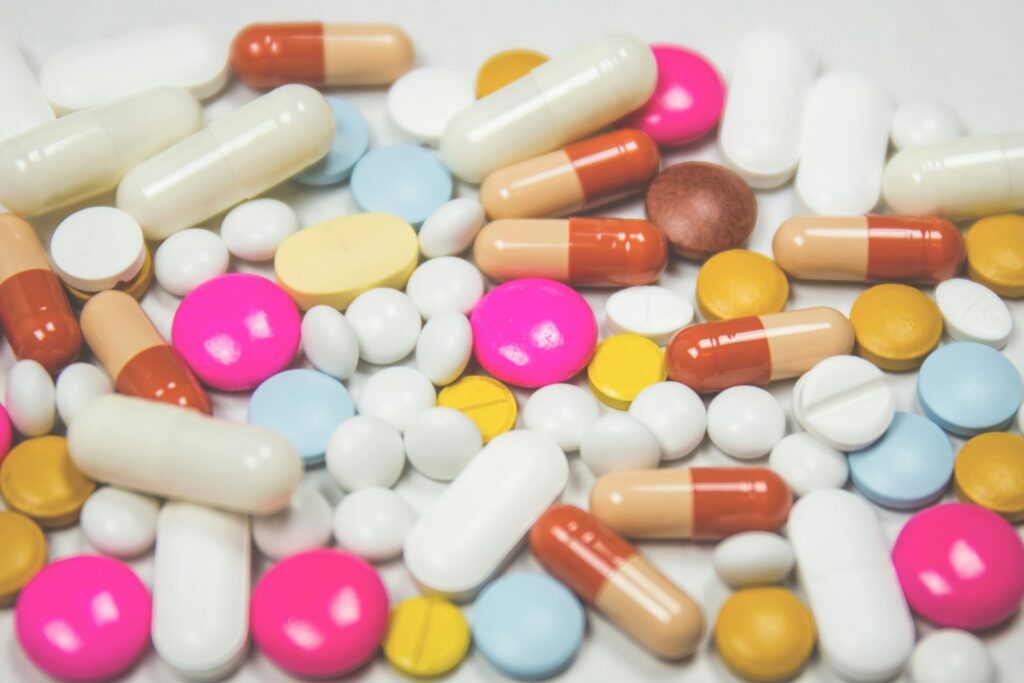
By - King Stubb & Kasiva on March 12, 2024
The pharmaceutical industry in India isn't just about producing pills promising relief and healing; it is about ensuring that every medication reaching the hands of patients meets stringent quality standards. Behind every pharmacy counter, there is a complex interplay of regulations governing drug manufacturing and distribution. With a projected market value growth of $100 billion by 2025, the industry is witnessing remarkable expansion. As the sector continues to evolve and expand, it becomes imperative to delve into the intricacies of the legal and regulatory framework governing drug manufacturing and distribution in the country.
At the helm of drug regulation in India stands the Central Drug Standard Control Organization (CDSCO)[1], responsible for approving drugs, conducting clinical trials, and setting quality standards. They also ensure compliance with regulations for both imported and domestically produced medications.Working hand-in-hand with the CDSCO is the Drug Controller General of India (DCGI), responsible for licensing and control functions, ensuring adherence to regulatory standards.
But the story doesn't end there. The National Pharmaceuticals Pricing Authority (NPPA) regulates drug prices under the Drugs Price Control Order of 1995, striving to make essential medications accessible to all. Meanwhile, the Directorate General of Health Services (DGHS) provides technical support and guidance, while the Indian Council of Medical Research (ICMR) sets ethical standards for biomedical research and development, ensuring responsible innovation.
However, ensuring compliance goes beyond just following the law. Leading pharmaceutical companies recognize the vital role of self-regulation. Initiatives such as adhering to ethical marketing practices and codes of conduct highlight the industry's commitment to building trust and prioritizing patient safety.
Despite the growth, the distributors face several challenges:
Quality Concerns: Counterfeit and substandard drugs erode trust in the system, leading to drug withdrawals and legal actions.
Regulatory Control Deficiency: Inadequate oversight allows substandard drugs to infiltrate the market, diminishing trust in the industry.
Elevated Distribution Costs: High transportation costs and involvement of multiple middlemen increase overall drug costs.
Limited Drug Availability: Scarcity of drugs due to multiple intermediaries leads to reduced sales and accessibility.
Inadequate Infrastructure: Poor infrastructure increases transportation and storage costs, impacting the distribution process.
Despite challenges, there are opportunities for growth:
Adoption of Technology: Utilizing mobile apps and online ordering systems enhances efficiency and reduces costs.
Rise in Private Companies: Entry of private firms intensifies competition and lowers drug costs.
Government Spending: Increased healthcare spending improves drug availability and affordability.
Foreign Investment: Foreign investment improves drug quality and expands the market.
Market Expansion: Rapid market expansion increases drug availability and sales.
Transformative trends shaping the industry include:
Enhanced Supply Chain Focus: Utilizing IoT, AI, and blockchain improves supply chain efficiency and visibility.
Customer-Centric Approach: Prioritizing customer service and personalized experiences enhances customer satisfaction.
The pharmaceutical landscape in India is marked by significant investments and recent developments that underscore the country's prominent position in the global pharmaceutical industry. Here are some noteworthy highlights:
Various collaborations and initiatives have been undertaken to bolster the sector. For instance:
Several pharmaceutical companies have introduced innovative products and ventured into new territories:
Indian companies have engaged in strategic collaborations and acquisitions to expand their global footprint:
The Indian pharma market is witnessing rapid expansion and regulatory reforms to foster growth:
In conclusion, the Indian pharmaceutical sector stands at the threshold of substantial growth amid evolving challenges and opportunities. Strict adherence to regulatory requirements, coupled with a focus on innovation and emerging trends, is crucial for sustainable development. Despite existing hurdles, the industry's commitment to compliance, coupled with strategic investments and collaborations, positions India as a key player in driving healthcare innovation, accessibility, and affordability on the global stage.
As stakeholders navigate the complex regulatory landscape, they play a pivotal role in shaping a future where quality healthcare is not only a priority but also accessible to a broader population. The ongoing commitment to regulatory compliance, coupled with proactive efforts to embrace innovation, positions the Indian pharmaceutical sector for continued growth and positive impact on public health.
[1] https://cdsco.gov.in/opencms/opencms/en/Home/.
[2] https://cdsco.gov.in/opencms/export/sites/CDSCO_WEB/Pdf-documents/acts_rules/2016DrugsandCosmeticsAct1940Rules1945.pdf.
[3] https://www.indiacode.nic.in/handle/123456789/1364?locale=hi.
[4] https://dfpd.gov.in/WriteReadData/Other/act5.pdf.
[5] https://pharmaceuticals.gov.in/sites/default/files/dpco2013gaz.pdf.
[6] https://ipindia.gov.in/writereaddata/Portal/IPOAct/1_31_1_patent-act-1970-11march2015.pdf.
[7] https://cdsco.gov.in/opencms/export/sites/CDSCO_WEB/Pdf-documents/acts_rules/2016DrugsandCosmeticsAct1940Rules1945.pdf.
[8] https://cdsco.gov.in/opencms/export/sites/CDSCO_WEB/Pdf-documents/acts_rules/2016DrugsandCosmeticsAct1940Rules1945.pdf.
[9] https://www.ibef.org/industry/pharmaceutical-india.
[10] https://janaushadhi.gov.in/pmjy.aspx#:~:text=Under%20the%20scheme%2C%20dedicated%20outlets,drugs%20and%20293%20surgical%20items..
[11] https://pharmaceuticals.gov.in/policy/national-medical-device-policy-2023.
King Stubb & Kasiva,
Advocates & Attorneys
Click Here to Get in Touch
New Delhi | Mumbai | Bangalore | Chennai | Hyderabad | Mangalore | Pune | Kochi | Kolkata
Tel: +91 11 41032969 | Email: info@ksandk.com